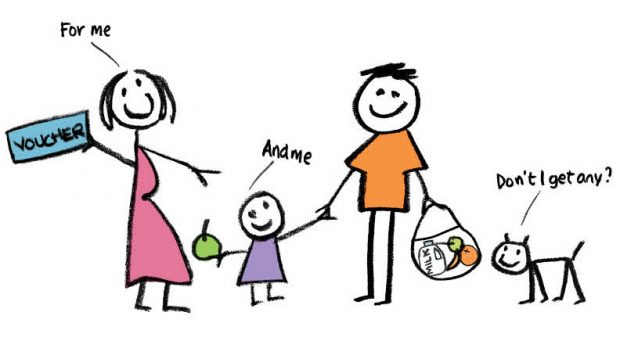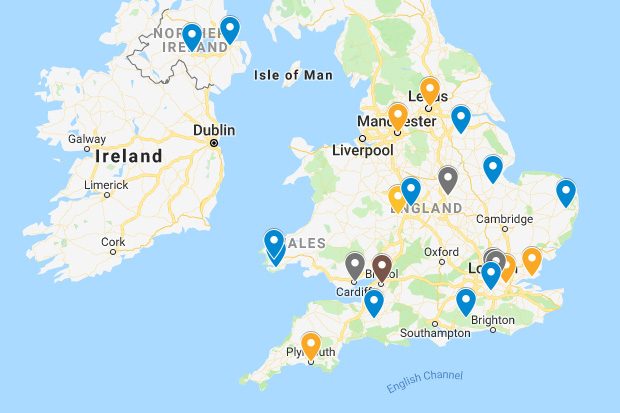
I’m the associate product owner working on the project to improve the Healthy Start scheme. As part of the beta phase, it is important that we engage with users to understand their needs.
Ongoing research has helped our project team to learn about users’ shopping habits and their awareness and use of digital. We have tested prototypes of the online application form with real users to inform future iterations.
We confirmed our target users
Previous research allowed us to identify who our target groups were:
- users who would find it difficult to use a digital service – for example due to language barriers, limited access to the internet or learning difficulties
- pregnant women eligible for Healthy Start but not currently in receipt of vouchers
- parents already in receipt of vouchers
- the above users with English as a second language
We made a plan for our research
To focus on the most time critical activities, we set up a 10 minute daily user research chat with our team and assigned action owners straight away. This allowed us to look at priority tasks for the day, but also highlight priorities for later on.
Our team decided to conduct user research every 2 weeks, face to face with users if possible, and to try some remote sessions in between. We used Confluence, an online tool that helps teams to share knowledge efficiently, to visualise our plan and asked everyone’s actions to be kept up to date daily.
Recruiting the right people
We reached out to local authorities and children’s centres in target regions to help us find suitable participants. We’ve received great support from a network of local authorities who have helped us to carry out research in a spread of geographical locations.

Supporting the recruitment with resources
We supplied each venue with a screener sheet to fill in and send back to us. This meant we could find suitable participants to represent our target personas. We made sure that personal data was safely stored on a secure NHS server and was not shared outside the project team.
We also created a simple, bespoke flyer for centres to display in suitable locations or to post on social media.
These resources helped us to explain the purpose of the research, who we were looking for and how they could get involved.
How did we conduct our research?
Surveys
Surveys are a great way of getting a high number of responses easily. Our team has conducted surveys to get views on:
- a service name
- current Healthy Start recipient views
- retailer experiences
- processes and challenges from a healthcare professional’s point of view
Our increasing network of contacts, and willingness from users to help, has meant the response rates have been great. After completing the survey, we have also received offers to be involved in helping with further research.
Face to face chats
Results from surveys have been combined with qualitative insights from visits to children’s centres around the country. We are really grateful for the co-operation and it’s been encouraging to see that so many people are willing to help with research.
The familiarity of visiting families in their local community has helped participants to feel relaxed and openly share thoughts on the current scheme and improvements.
Remote prototype testing
Our remote testing has been widely spread across the UK. We used a video link through the Silverback app. Again, children’s centre staff have helped us find those users willing to have video chats with the team.
What challenges did we face?
As with many on site testing sessions, we did have a few ‘no shows’. Due to the nature of this research, we recognise that some of our user groups may be living in vulnerable situations or have chaotic lifestyles that meant they were unable to join us.
For our users with English as a second language, we made arrangements for an interpreter to join us to interview women from the Syrian community. We gained some real insight into family life, the cultural differences and the challenges the women faced, sometimes daily, when doing their shopping.
One of our users explained that due to anxiety they preferred not to use the telephone or video process for the chat. We adapted the session so that the user could opt out of the video/telephone call but still run through the prototype application form and provide feedback over instant chat. We also added in a few questions about their experience of digital and audio services.
Our team carried out face to face sessions in children’s centres across the country - Plymouth, Leicester, Southend, Kennington and Leeds - we coupled this with remote testing and telephone interviews around the UK.

So, what's next?
We are already widening our search to involve users from different parts of the UK including Northern Ireland and Wales.
We are engaging with stakeholders including retailers from large supermarkets, convenience stores and market traders. This will give different types of service users a voice to share the impact of the scheme on them, give their ideas and highlight any potential challenges.
To combine with the healthcare professionals survey, the team are arranging one to one interviews with health visitors and midwives to hear views of how the current scheme is promoted. This will also help us to understand how changes to the scheme may have an impact on their working day and the people in their care.
We are always keen to hear from those passionate about Healthy Start, healthy eating, obesity, vitamins or other linked subjects. To get in touch you can email us at: nhsbsa.healthyfoodbeta@nhs.net